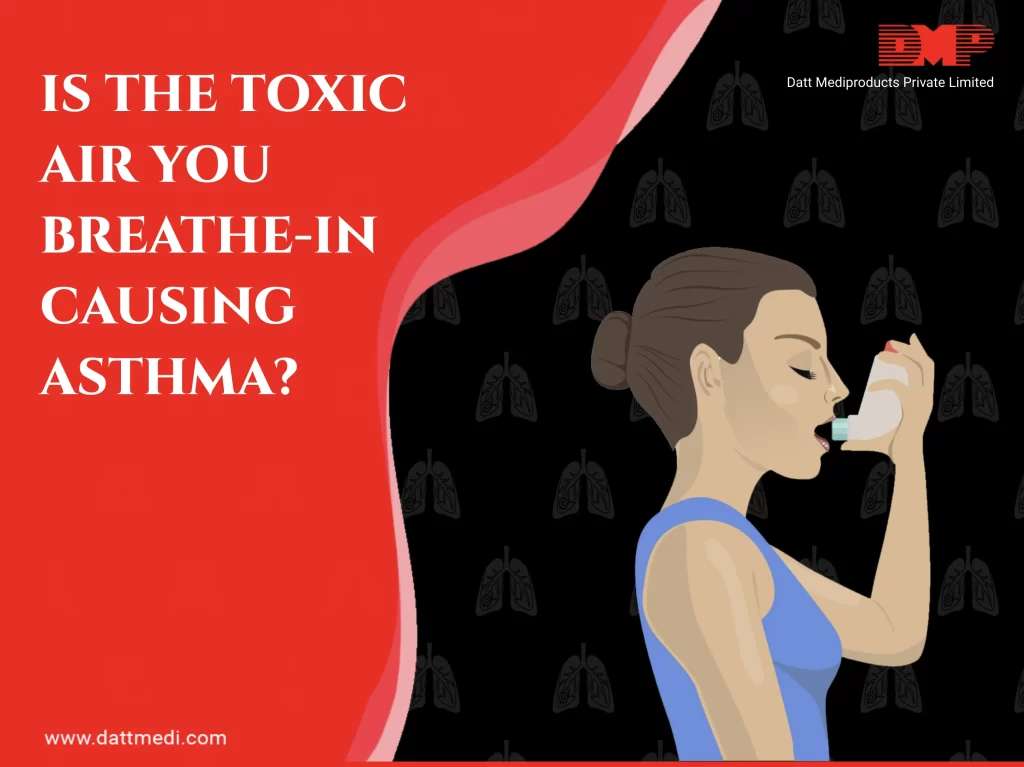
Do you know that 1.2 million deaths in India could be attributable to the growing air pollution?
As per a study published in The Lancet Planetary Health journal, approximately 77 % of Indians breathe in polluted air, which is above the level of the National Ambient Air Quality Standards (NAAQS) safe limits.
Health professionals and environmentalists are concerned with the increasing air pollution levels that are causing serious breathing problems as well as affecting the overall health of the population.
Breathing disorders include all those indications in which an individual is unable to breathe properly and feels shortness of breath. Other conditions may range from a stuffy nose to more serious complications.
Below we have compiled a few of the conditions that lead to shortness of breath:
1. Problems with the respiratory system
2. A condition affecting our Lungs like Asthma, Pneumonia, Pulmonary Hypertension, Tuberculosis, Cystic fibrosis, Mesothelioma, Lung cancer etc.
3. When our heart is not able to pump the blood properly to various body parts, our body doesn’t get enough oxygen and we feel breathlessness
4. Panic attacks and anxiety
5. Allergies
The irony of the situation is that breathing disorders not only affect smokers but, they can affect any individual irrespective of the age, gender or smoking habits.
As per a report published by WHO “The Global Impact of Respiratory Disease”, respiratory problems are one of the main causes of disability and death among the patients. About 3 million chronic obstructive pulmonary diseases (COPD) patients die each year which makes it the third leading cause of death globally. Pneumonia is the leading cause of death among children below 5 years of age.
Let’s talk about ASTHMA which affects 3.5 lacs children each year in India.
What is Asthma?
Asthma is a chronic condition in which the breathing passages become very sensitive due to the tightening of the muscles, inflammation and extra mucous being developed due to infection or allergy (allergic asthma). Asthma affects millions of individuals every year. Sometimes the condition might also be caused by problems in the immune system.
Asthma Symptoms
Different people may have different asthma symptoms. Below mentioned are the common signs and symptoms of Asthma: - Wheezing sound when exhaling - Chest tightness or heaviness - Shortness of breath - Cough
Severe asthma attacks can be fatal and may require immediate emergency care. Following are a few signs and symptoms of serious asthma emergency conditions: - Difficulty breathing - The inhaler doesn’t seem to help - Problem speaking - Blue lips or nail - The pressure felt above breastbone and between the ribs - Sweating - Unconsciousness
A few of the asthma symptoms might also be the same as that of other lung disorders. We recommend going to the doctor and getting diagnosed properly and taking medicines as directed by the physician.
How can Asthma be managed?
Asthma can’t be cured but with certain lifestyle changes and medications, the breathing problems faced by the asthmatic individuals can be improved. Asthma medications include Asthma Controller (Preventer) medicines and Asthma Reliever (Rescue) medicines.
Asthma Preventers include long-lasting bronchodilators or anti-inflammatories (leukotriene receptor antagonists) while Asthma Rescue medicines are useful in case of asthma attacks as they are fast acting bronchodilators/ nebulizers or corticosteroids offering quick relief to the patient.
We @ Datt Mediproducts understand that asthma can’t be cured but avoiding its triggers is the best way to manage it.
Be Healthy, Be Safe!





